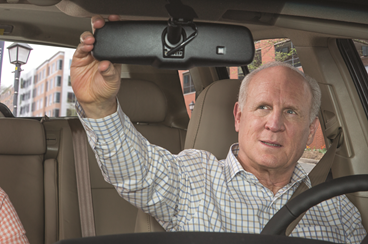AARP Hearing Center

By Mike Flanagan - AARP Driver Safety Program Volunteer State Coordinator – Kansas
We all undoubtedly remember when our parents had “the talk” with us when we were in our formative years. We also probably remember having to have “the talk” with our kids when they were pre or early teens. Now, many of us have come full circle and have to have “the talk” with either one or both of our parents, a spouse, friend, neighbor or other loved one. However, this time “the talk” is about asking them to significantly restrict or stop driving. Despite the years, “the talk” doesn’t get any easier.
Statistics show that older drivers are typically safer drivers, but after age 75 they have a higher risk of being involved in a collision for every mile they drive. There is no magic age at which an individual should consider giving up driving. However, the day will come for all of us – if we live long enough – that we should definitely consider “turning in” our keys.
AARP can help you with the difficult task of having a conversation with a family member through its “We Need to Talk” program. Of the older adults surveyed who reported that someone had talked to them about their driving, more than half said they listened to and followed the suggestions of others.
The key to having “the talk” with an individual is to start the conversation early. Hearing sensitive information from the right person can make a big difference. To increase the chances of success, carefully select the person who will initiate the discussion and have others reinforce decisions about driving. The top choice of married drivers is to hear about driving concerns first from their spouses. Older drivers living alone prefer to have these conversations with their doctors, adult children or a close friend.
Ideally, the first conversations about safety should occur long before driving becomes a problem. Early, occasional and candid conversations establish a pattern of open dialogue and can reinforce driving safety issues without the strain of asking someone to change his or her driving behaviors. Statistics have shown that in order to reinforce an idea, the message must be delivered at least seven times before it will begin to register. Don’t stop with just one conversation.
If you know of someone who might benefit from reinforcing their driving skills, encourage them to take the AARP Smart Driver course. More than 90 classes are offered throughout the state to anyone holding a valid driver’s license; and, you can get a discount on your car insurance. These classes will provide the participants information that will allow them to drive longer and safer. This is a good first step. In the alternative, AARP also offers its “We Need to Talk” program which gives tips and suggestions on how to have “the talk” with family members or friends. If you would like to have more information on either one of these valuable programs, please contact me at ( 1-913-685-4642). Or visit the Driver Safety website.
Drive safer – Save money – Live longer!
###































































